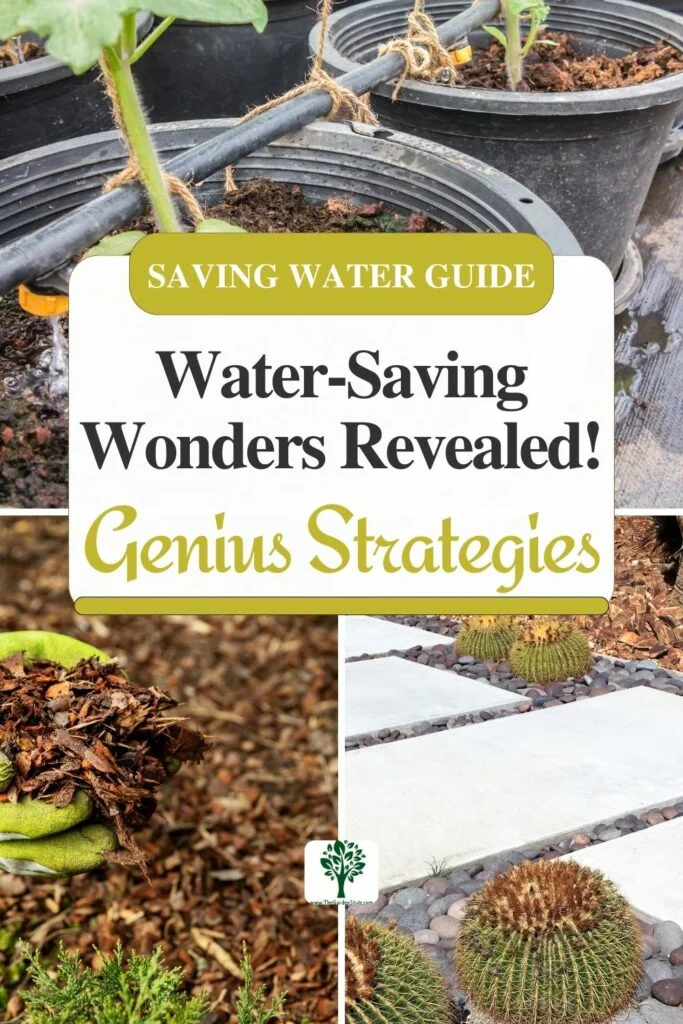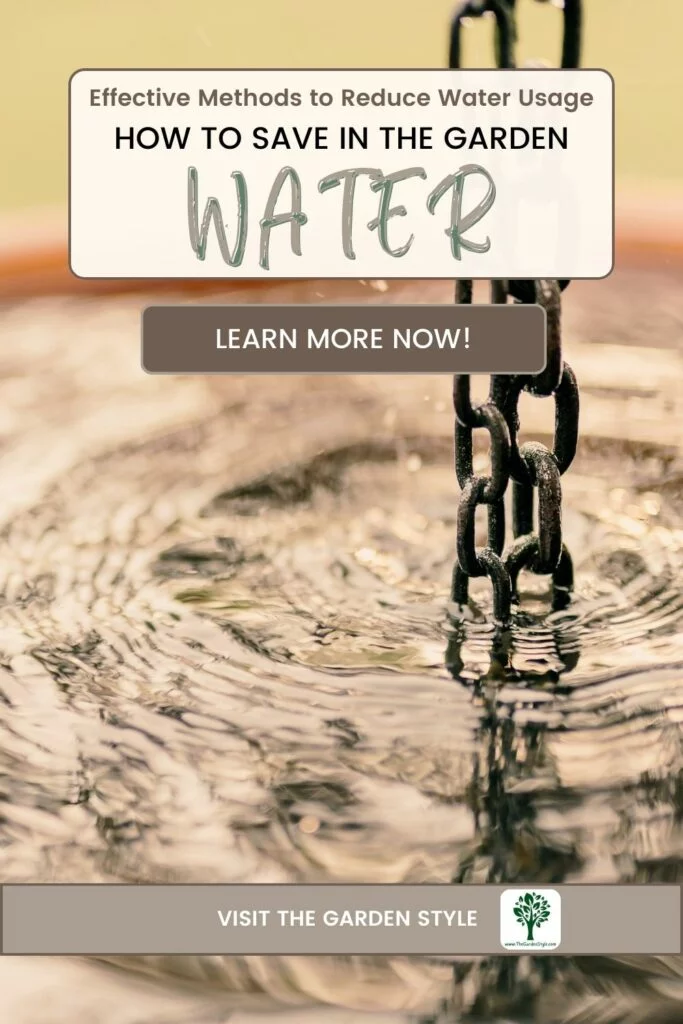With climate change and population growth putting more pressure on freshwater supplies around the world, it’s becoming increasingly important for households to use water wisely. This is especially true in the garden, which can account for a large proportion of a home’s water use. The good news is there are lots of simple and effective ways to save water in the garden. By making a few changes, you can maintain a thriving garden while being kinder to the environment. Read on to explore water-saving techniques for the garden. This guide explains the different methods to conserve water in the garden, such as mulching, drip irrigation, collecting rainwater, landscape design that saves water, like xeriscape, and more clever strategies.
Table of Contents
Why Saving Water in the Garden Matters
There are compelling environmental and economic reasons why garden water conservation should be a priority:
- Freshwater is a precious, limited resource that many regions struggle to provide. Implementing water savings enhances sustainability.
- Drawing less from natural sources like reservoirs and aquifers allows them to recharge and maintain water tables. This protects ecosystems that rely on water.
- Pumping and treating water consumes huge amounts of energy. Curtailing water use reduces associated greenhouse emissions.
- Municipal water costs often increase during droughts or periods of scarcity. Cutting back can save money on utility bills.
- Gardens with lower water needs require less infrastructure and maintenance over time compared to thirsty plants.
Every small change, like a shorter shower or fully loaded dishwasher, combines to make a big difference. Outdoors, the same principle applies. Adopting more responsible gardening practices protects the climate while allowing your yard to stay lush.
Methods to Reduce Water Usage
From leveraging smart landscaping techniques to upgrading irrigation systems, numerous options exist to transform water-guzzling gardens into sustainable spaces that help the planet.
- Mulching: The Silent Water Saver
- Drip Irrigation: Watering with Precision
- Rainwater Harvesting: Nature’s Gift to Your Garden
- Xeriscape: Landscaping for Water Efficiency
- Lawn Size Reduction and Drought-Friendly Grass Seeds
- Other Water-Saving Tips and Tricks
Mulching: The Silent Water Saver
Mulching is the unsung hero in the quest for water conservation. Not only does it retain moisture, but it also contributes to the overall health of your garden. Let’s delve into the world of mulch and explore how this simple practice can make a significant difference.
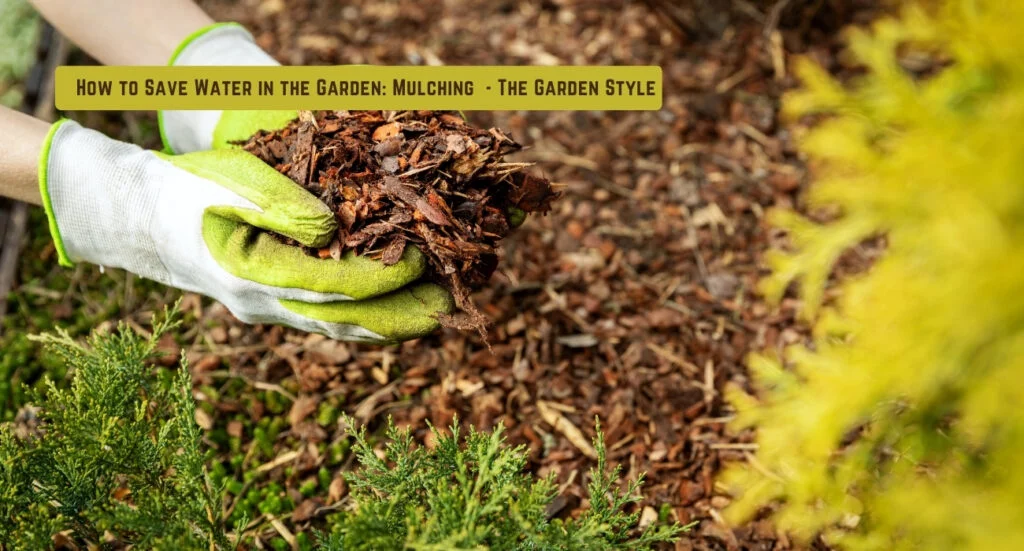
Choosing the right mulch is key to optimizing water retention. Organic mulches like bark and compost not only conserve moisture but also enrich the soil. Meanwhile, inorganic mulches such as stones or gravel offer a different set of benefits. Applying mulch may seem straightforward, but there’s an art to it. Discover the proper techniques for mulch application to ensure maximum water-saving effects. Learn more about selecting the perfect mulch for your garden’s needs.
Tips for Mulching to Save Water in the Garden
Spreading mulch in planting beds provides powerful water savings by reducing evaporation from the soil while preventing weeds. Organic mulches like bark chips, straw, leaves, compost, or grass clippings are ideal options. Apply a 2-3 inch layer in flower beds around trees and shrubs. As the mulch breaks down, it also enhances soil nutrition and fertility.
Drip Irrigation: Watering with Precision
Bid farewell to water wastage with a drip irrigation system. This precise method delivers water directly to the roots, minimizing runoff and evaporation. Explore the numerous benefits of drip irrigation and witness the efficiency it brings to your garden.
Don’t be intimidated by the thought of setting up a drip irrigation system; it’s simpler than you think, and you can adapt it to each part of the garden and plant. Say goodbye to the hassle of traditional watering methods.
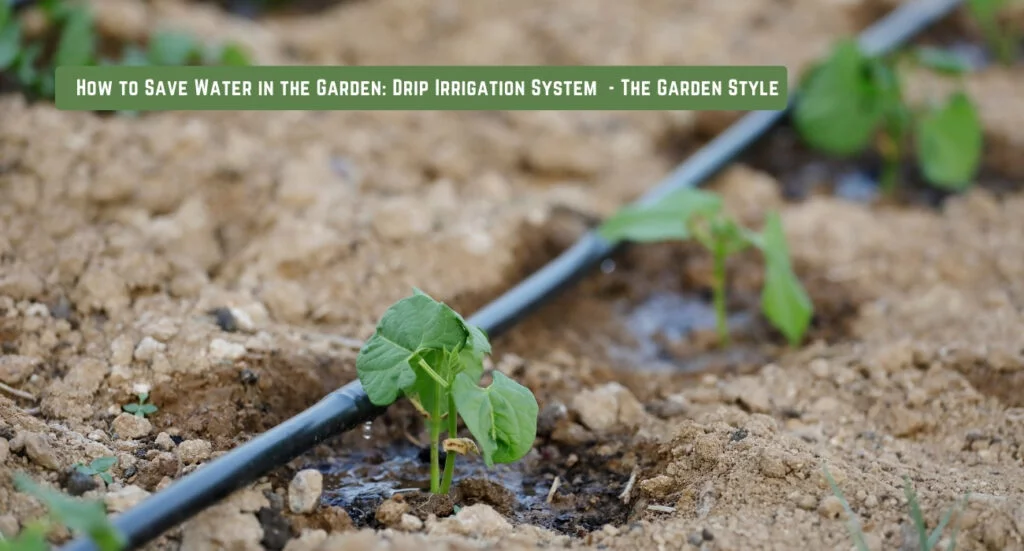
Tips for Saving Water with Drip Irrigation
Drip irrigation delivers water via a network of tubes with emission points that target plant roots. This approach uses 20-50% less water than sprinklers by minimizing waste from wind, evaporation, and overspray. Drip irrigation also helps soil retain moisture. Installing a smart controller allows custom watering schedules tailored to specific plants.
Rainwater Harvesting: Nature’s Gift to Your Garden
Save tons of water by collecting rainwater for your garden. We’ll explore the benefits of this eco-friendly practice and guide you through the process of setting up rain barrels and utilizing rain chains and rain gardens.
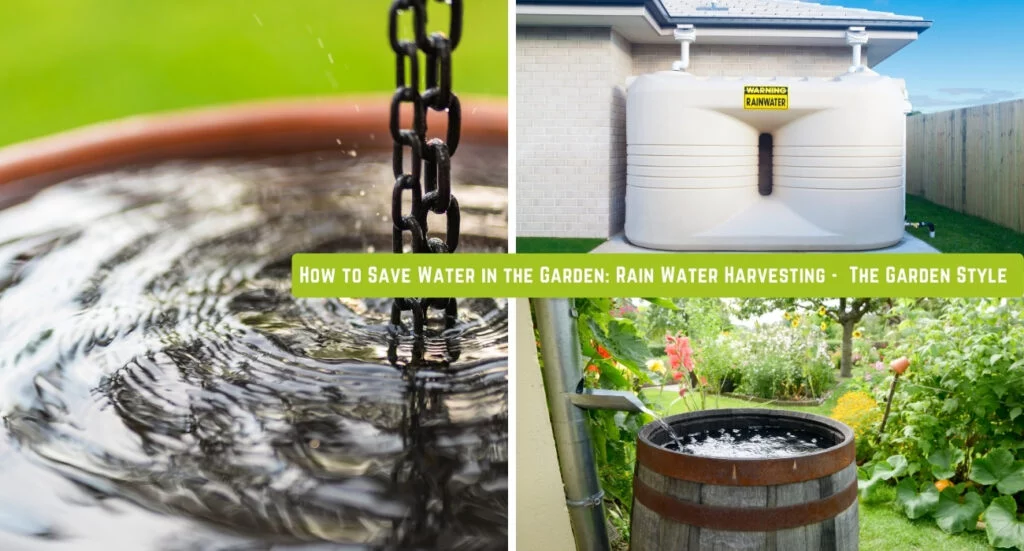
Creating a rain barrel system is a cost-effective and environmentally friendly way to store rainwater. You can also elevate your garden aesthetics while efficiently using rainwater. Discover the charm of rain chains and the functionality of rain gardens in channeling rainwater where it’s needed most. It’s a beautiful synergy of design and conservation.
- ENCHANTING GARDEN RAIN CHAINS – Gorgeous Chimes & Cups Make a Beautiful Alternative to Ugly Downspouts – Hang From the Gutter & Watch the Water Collect & Direct Away from Your House in a Lovely Cascading Waterfall Display
- UNCOATED COPPER CONSTRUCTION – Maintenance Free 100% Copper Features Stunning Shine & Rustic Patina That Improves with Age & Exposure – Sustainable Material is Naturally Safe and Clean Harvesting of Rainwater
Tips for Collecting Rainwater to Save Water in the Garden
Collecting rainwater in barrels or cisterns provides a sustainable source for irrigation without tapping strained water supplies. Rainwater is better for gardens than chemically treated tap water. Set up a water harvesting system by positioning gutters to channel rainfall into storage containers. Use the rainwater for gardening tasks within 2-3 days to prevent mosquito breeding.
Xeriscape: Landscaping for Water Efficiency
Xeriscape, a landscaping approach that prioritizes water efficiency, is gaining popularity. Learn how to design a water-wise garden that not only conserves water but also thrives in challenging conditions.
Choosing xeriscape, at least for your front garden, means designing a water-wise garden.
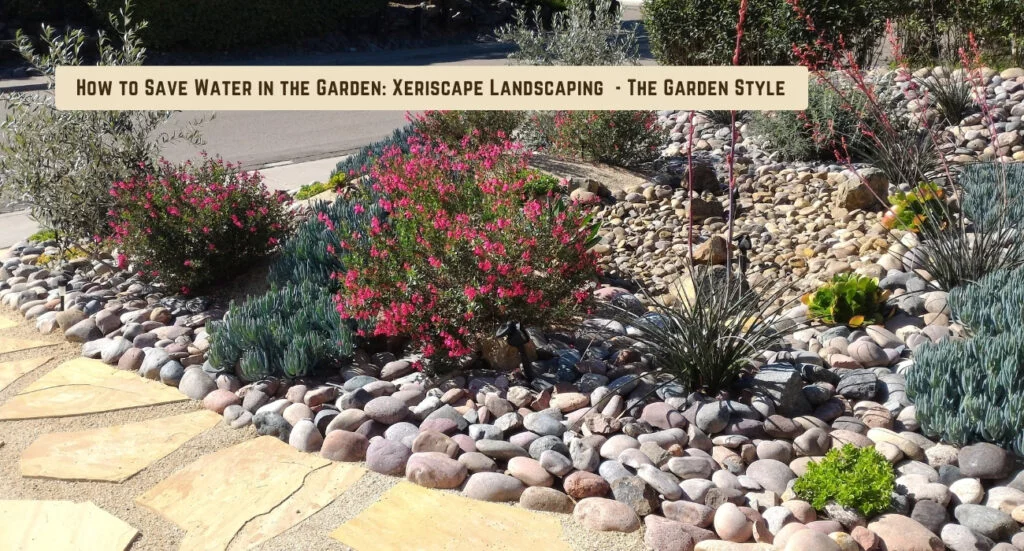
Choosing Drought-Resistant Plants
Selecting the right plants is the cornerstone of xeriscaping. A variety of drought-resistant plants will flourish in your garden, requiring minimal water while adding beauty and diversity.
The key is choosing native plants adapted to cope with hot, dry conditions to cut back on water needs. Once established, they thrive with little intervention. Attractive drought-resistant options include ornamental grasses, sedums, lavender, gaillardia, cacti, succulent plants, etc. Grouping plants in beds based on similar water requirements streamlines irrigation. Learn more about xeriscaping your garden.
Smart Landscape Planning for Water Conservation
Effective xeriscaping involves strategic planning. Explore landscape design techniques that optimize water usage, from grouping plants with similar water needs to incorporating hardscapes that reduce the overall water demand.
Reduce Lawn Size and Select Drought-Friendly Grass Seeds
The vast expanse of turf grass within a garden possesses an unquenchable thirst, consuming substantial volumes of water in its bid for sustenance. One effective strategy involves minimizing or altogether eliminating the expanses dedicated to traditional lawns to alleviate this demand and foster a more water-conscious landscape. Replace the lawn-reduced area by introducing alternative elements such as mulch, ground cover, native plants, or the incorporation of hardscapes like inviting patios.
An essential consideration is to confine the presence of grassy areas primarily to spaces designated for recreational activities or entertainment purposes. In instances where maintaining a portion of the lawn is imperative, the selection of drought-tolerant varieties such as Bermuda and rye grass becomes paramount.
Moreover, adopting the practice of allowing certain lawn sections to transition into a brown, dormant state during the peak of the summer months proves to be a pragmatic approach. This intentional transition not only aligns with water conservation principles but also underscores the adaptability and resilience of a well-thought-out garden design.
Other Tips for Saving Water in the Garden
Supplementary techniques to squeeze every drop of savings from an outdoor water budget:
Water Early in the Day
Timing is everything when it comes to watering. Discover the best time for watering plants and schedules for different seasons and plant types. Schedule irrigation for early morning when evaporation rates are lower. Avoid evening watering since moisture sitting overnight promotes fungal growth. Early watering also allows the ground to dry out during hot afternoons.
Detect and Fix Leaks
Dripping taps, broken sprinkler heads, and faulty valves waste huge volumes year-round. Routinely check systems for leaks and immediately repair any found. A single leak can spew hundreds of gallons monthly if neglected.
Install a Water Timer
Water timers attached to outdoor faucets or sprinklers ensure irrigation systems run for an allotted time and then automatically shut off. Timers prevent forgetfully leaving the water running for too long. Program in multiple shorter watering cycles for improved absorption.
Monitoring Soil Moisture Levels
Understanding your soil’s moisture content is key to avoiding overwatering or underwatering. Learn how to assess soil moisture levels and adjust your watering practices accordingly. It’s a simple yet effective way to conserve water and promote a healthy garden.
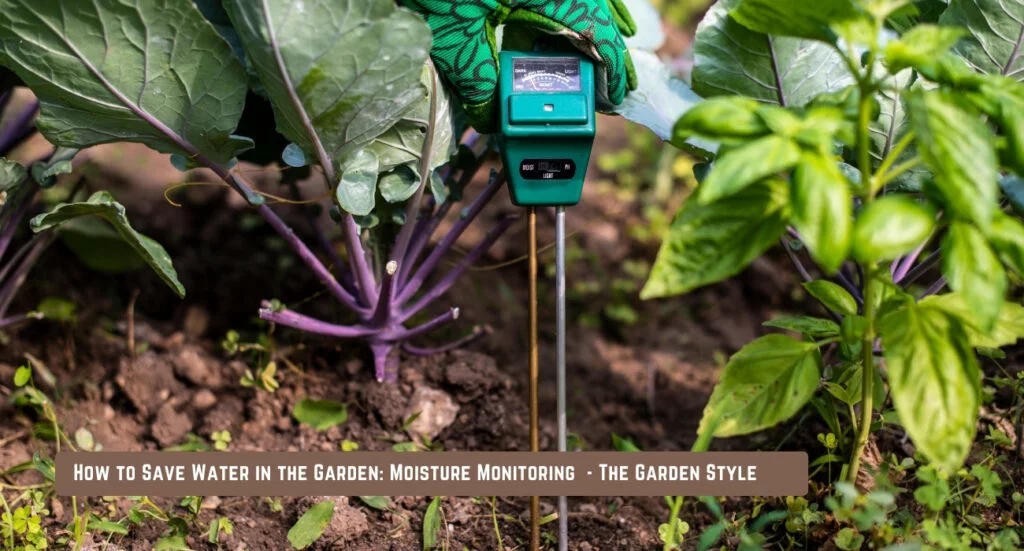
Summary Table of Water-Saving Techniques
The following summary table provides a concise breakdown of the water saved, associated costs, and a quick reference guide to each method. This comparative analysis allows for an informed understanding of the efficiency, affordability, and environmental impact of various strategies employed in creating a water-wise garden.
| Method | Water Saved | Cost | Description |
| Mulching | 20-30% | Low | Retains moisture, enriches soil, and reduces water runoff |
| Drip Irrigation | 20-50% | Medium | Precise watering directly to plant roots, minimizing waste |
| Rain Water Harvesting | Varies | High | Collection of rainwater for eco-friendly garden watering |
| Xeriscape Landscaping | 30-80% | Low to Medium | Designing water-wise gardens with drought-resistant plants |
| Reduce Lawn Size | 30-70% | Medium | Designing water-wise gardens |
| Water-Saving Tips | 30-80% | Low | Small adjustments for efficient water use in the garden |
FAQs: Your Water-Saving Queries Answered
Organic mulches like bark chips, straw, compost, leaves, and grass clippings are ideal for conserving moisture. Inorganic choices like pebbles and gravel are less effective. Opt for larger shredded bark pieces that resist floating away.
Ideal run times for drip irrigation depend on factors like soil type, sun exposure, and the plant variety being watered. Emitters usually need to run 30-60 minutes per section to water plants up to 12 inches deep sufficiently. Program multiple start times to allow moisture penetration.
Yes, captured rainwater is fine for watering edible gardens. Take precautions like screening inlet holes to keep mosquito larvae out of barrels. Don’t use early runoff from rooftops to avoid contaminants. Ensure barrels are cleaned and free of algae before the growing season.
Watering early in the morning, between 4 am and 10 am, is optimal to reduce evaporation and waste. Avoid evening watering that leaves plants damp overnight, promoting mold issues. Morning watering enables better absorption, with less foliage damage than midday heat.
Inspect your system at the start of each growing zone to catch winter damage. Do quick visual checks for leaks monthly during watering seasons, watching for large wet patches suggesting broken lines or heads. Conduct pressure tests annually to detect small leaks, shutting off zones to see if the meter still runs. Repair all found leaks promptly.
Final Thoughts about How to Save Water in the Garden
Coping with hotter, drier summers necessitates wiser outdoor water use in every garden. Conserving water buffers local ecosystems against shortages while saving on utility costs. Anyone can implement these practical tips to sustain vibrant garden spaces that demand less from precarious water supplies.
As we conclude this journey through water-saving techniques for your garden, remember that every drop counts. Small adjustments add up to a meaningful impact. Beyond the suggestions outlined above, always abide by any municipal water restrictions in your region. If each household reduced water waste through thoughtful gardening, collectively, we would safeguard freshwater reserves critical to all life on Earth. By implementing these practices, you not only conserve water but also create a sustainable and thriving garden.
Pin it for later and recommend your friends and families these simple strategies on how to save water in the garden.
